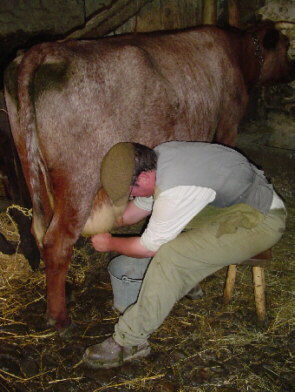Why is it called “cottage cheese”? The logical answer would be that it is cheese made in a cottage. In simple terms, that is true. To dig deeper, “cottage” original referred to a small building for animals or small house called a “cote”. The cottage was a place that dairy products (likely butter) were made with the milk. Cottage cheese is also a dairy product since it is derived from milk. It is said that the excess milk from creating butter in the cottage was used to create cottage cheese.

The earliest use of the word “cottage cheese” in American English was in 1831 as follows: “There was a plate of rye-bread, and a plate of wheat, and a basket of crackers; another plate with half a dozen paltry cakes that looked as if they had been bought under the old Court House; some morsels of dried beef on two little tea-cup plates: and a small glass dish of that preparation of curds, which in vulgar language is called smear-case, but whose nom de guerre is cottage-cheese, at least that was the appellation given it by our hostess. [“Miss Leslie,” “Country Lodgings,” Godey’s “Lady’s Book,” July 1831]” Source.

